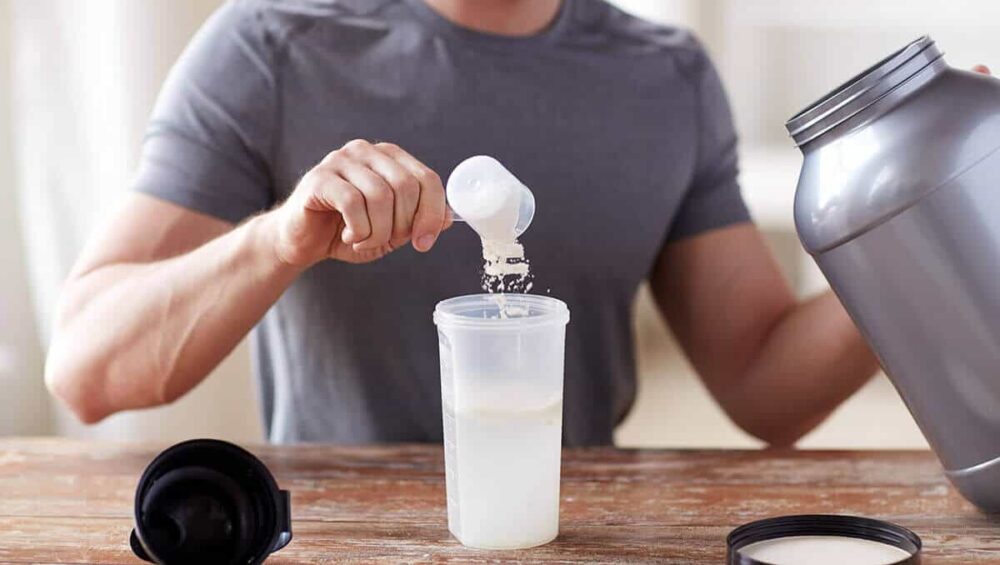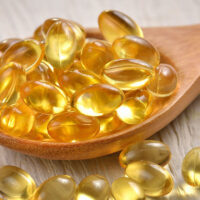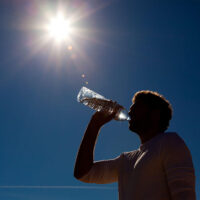Most of you probably know that there is no better product to increase muscle mass and improve its shape than creatine, which has a very good reputation and is the most popular and recognised substance used to enhance training. It is not widely known, however, that creatine has many other applications, outside of sports. For instance, it is used in diagnosing diseases of the nervous and muscular system, such as muscle dystrophy, and diseases affecting the elderly people, including Parkinson’s disease, muscle atrophy, exhaustion syndrome or Huntington’s disease (genetic disease of the nervous system).
What is creatine?
Creatine is an organic compound, naturally occurring in the body, which stores energy in muscles. It is composed of 3 amino-acids:
- arginine
- glycine
- methionine
The human body contains ca. 120 g of creatine in the form of creatine phosphate. Creatine is supplied with food, but even when eating healthy, we are unable to deliver the sufficient amounts of the substance to our bodies. Among products with the biggest content of creatine are herrings (6.5-10g/kg), pork (5g/kg) and beef (4.5g/kg). Nonetheless, as we are unable to absorb creatine with foods only, we need a good supplementation.
How to dose creatine?
Creatine dosing is a highly controversial issue, with a number of mutually exclusive theories. It has been recognised that the optimum dose equals 5-10g per day, with higher doses administered at the beginning of treatment (to reach the proper saturation), on an empty stomach. In fact, however, there is no research that would unanimously confirm this assumption. It is best if you adjust the dose to your body weight, by taking 1g of creatine for each 10 kg of your mass. Take the substance twice a day, in the morning, before working out, and in the evening, immediately after training. Creatine has also been proved to be the most effective if taken together with other supplements like, for instance, a protein powder, carbohydrates or taurine, as they improve its absorption. Creatine can be taken all year round, without the saturation phase.
What are the effects of creatine supplementation?
Creatine is responsible for energy storage in muscles. The higher the level of the substance, the bigger the volume of energy to be used. Energy is obtained from ATP, i.e. adenosine triphosphate, which accelerates muscle contraction. ATP consists of high-energy phosphate bonds. After the cleavage of the bonds, the following substances are produced:
- ADP – adenosine diphosphate
- inorganic phosphate (Pi)
- energy
Although ATP has a poor potential to store energy which is sufficient for a few contractions only, it is seen as a source of energy. It is “regenerated” through synthesis, but the process occurs only in the first fractions of a second. The re-synthesis is activated in an anaerobic process from phosphocreatine, and then from blood glucose or muscle glycogen. It is important to maintain the contraction ability and not permit significant transformations of adenosine triphosphate to ADP and Pi. However, if planning an intense effort and needing much more energy, you need to draw it from aerobic metabolism. For this process to take place, more carbohydrates, fats and proteins are needed.
The “nucleus” of energy in the ATP is phosphocreatine, which serves as a rapidly mobilizable reserve of high-energy phosphates. Energy is produced in the process of phosphocreatine decomposition into:
- creatine
- inorganic phosphate Pi
To provoke regeneration of creatine, the body needs free creatine. When experiencing strength deficiencies, consider supplementing phosphocreatine, which you may find challenging, as the compound gets decomposed in digestion. To be successful, choose dietary supplements with creatine, which:
- accelerate ATP synthesis, and, thus, facilitates the synthesis or proteins
- delay the sense of fatigue (due to the activity of phosphocreatine)
- inhibit ATP removal from the body
- increase cell hydration
What reputation does creatine have?
Creatine is widely used by athletes and is listed among the most effective dietary supplements on the market. Creatine is often sold as monohydrate, which is soluble in water. The monohydrate quickly binds water in the muscles, thus favouring fast growth of their circumference. The substance enhances strength and endurance, expansion of muscle mass and water storage in muscles.
Those who train intensely happen to have creatine drops. Strength athletes have bigger creatine reserves in muscles, which, however, does not mean that they can abandon regular supplementation.
Creatine is also effective in endurance sports, especially in the final stages of competitions, where strength and speed count more than endurance.
What is creatine malate (TCM)?
Creatine malate is a combination of creatine and malic acid (1:3). It is known as TCM, tri-creatine malate or di-creatine malate. Creatine malate has a more stable structure than the monohydrate, but still, it is just another form of creatine available in the market.
The preparation is an intermediate step in the Krebs’ cycle, i.e. in the process of combustion of bicarbonate fragments, in which hydrogen equivalents and carbon dioxide are released. Creatine malate stimulates the synthesis of ATP, which means that it releases energy and improves athletes’ endurance.
Creatine malate is the only amino-acid that leaves the mitochondrial membrane without being converted into a different amino-acid, thus joining the Krebs’ cycle and releasing energy to muscles.
It has catabolic activity. Having left the mitochondria, the substance is converted into PEP (phosphoenolpyruvate), which transports phosphorans that are bigger than ATP and, thus, can be used for ADP activation and production of ATP. This is how energy is produced in muscles.
Another property of creatine malate is that it dissolves in water better than the monohydrate, which makes it easier to absorb. Creatine malate contains, among others, citrates and pyruvates which, when taken up in high amounts from the digestive tract, effectively build up the muscle mass. It is good to know, however, that it can cause lower muscle growth than the monohydrate.
What is the connection between TCM and vitamin D?
Creatine is safe for humans. It is sold combined with buffering compounds such as sodium bicarbonate and trisodium citrate, which help maintain proper balance in muscle cells.
Since recently, vitamin D has been added to creatine. Vitamin D is broadly used and supports a number of cells, tissues and organs, including:
- digestive tract
- immune system
- pancreas
- skeletal system
- kidneys
- skin
- parathyroid gland
Vitamin D is particularly important to people with insulin resistance, as they are usually severely deficient in Vitamin D. Insulin transports nutrients to the muscle tissue, if only the proper insulin sensitivity is developed. The process is supported with vitamin D. Insulin is an anabolic hormone and plays a major role in the metabolism of carbohydrates, fats and proteins. TCM and vitamin D complement each other.
Other uses of creatine
Creatine has only just started to be widely discussed in the context of impact on other processes than energy storage in muscles. The substance is successfully used in elderly patients to alleviate:
- fatigue
- muscle atrophy
- circular atrophy
- exhaustion
- Parkinson’s and Huntington’s disease
- other brain pathologies
Creatine reduces blood cholesterol. Plus, it has found application in treating inborn metabolism errors, for instance, in people with inborn absence of enzymes responsible for creatine synthesis or the growth hormone.





